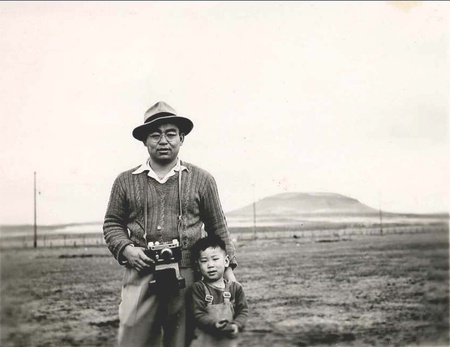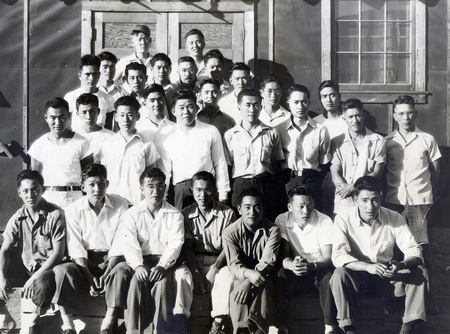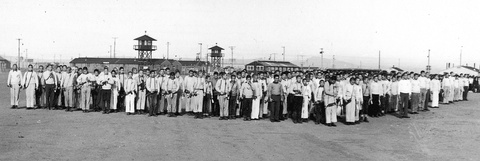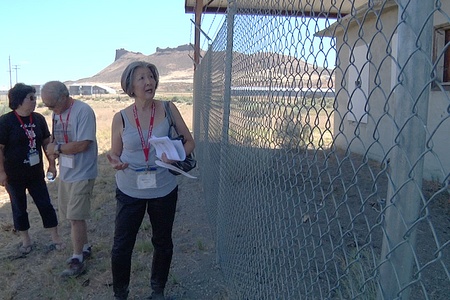In these difficult political times, resistance appears every day—from marches to political organizing to Star Wars movies to hashtags. But for many within the Japanese American community, resistance remains a difficult and painful topic. Yonsei Konrad Aderer’s latest documentary, Resistance at Tule Lake, seeks to address that topic, focusing on the most controversial of the ten long-term concentration camps by the War Relocation Authority.
Back in 2015 (and 2013), Aderer spoke with Discover Nikkei writer Norm Ibuki about the film and its making. Since then the issue of mass incarceration has reopened “seemingly out of the blue, [taken] on a new life,” he says, referring to the multiple allusions in the news by campaign workers and elected officials.
“I just had no idea how far this country had been heading in this direction,” he says now.
Beginning in February 2017, Resistance at Tule Lake has traveled to nearly a dozen cities and has already garnered national and international press attention. Aderer, who produced, directed, edited, and wrote the film, spoke with Discover Nikkei again before its screening at the Japanese American National Museum on February 10, 2018.
Background
Resistance covers a great deal of important historical ground, from early Japanese immigration to Pearl Harbor to incarceration and beyond, focusing on groups and individuals who protested at Tule Lake. It includes rarely-seen photographs and interview footage (current and archival) of Tule Lake incarcerees, including Hiroshi and Sadako Kashiwagi, Grace Hata, Bill Nishimura, Jeannie Tanaka, Jimi Yamaichi, Morgan Yamanaka, and Tokio Yamane. Expert historians in the film include Tetsuden Kashima, Barbara Takei, and Roger Daniels; lawyers including Ernest Besig and Wayne Collins, Jr. also play important roles.

Like many younger generations of Japanese Americans, filmmaker Aderer had not heard much about the wartime incarceration while growing up. His grandparents were imprisoned at Topaz, and though his mother talked about it, his grandmother rarely spoke of it. His connection to the topic of Japanese American resistance can be traced in part to high school, where he played “no-no boy” Mitch Tanaka who ends up in Tule Lake, in the Wakako Yamauchi play 12-1-A. “I only half understood what that meant,” he says, “how many people [resisted], what happened to them…It was like going off a cliff.” But his interest grew exponentially while he was conducting research for his first film, Enemy Alien.

Reactions
Resistance may be one of the most thorough treatments of resistance within Tule Lake itself—from tactics like hunger strikes, work stoppages, and group organizing. Perhaps most importantly, the film gives ample screen time to several of the most taboo topics within camp history: that of draft resistance, renunciation, sequestration within camp (at the infamous “stockade” and “bullpen”), the nationalist Hoshi Dan group, and physical torture. It uses interviews with several renunciants, male and female, each with slightly different rationale and emotional reaction to their decisions. That emotional impact carries a great deal of the film; the postwar journeys of Grace Hata, Jeannie Tanaka, and Juichi Yamamoto are particularly moving. The film concludes with the “massive ambivalence” on Jeannie Tanaka’s face as she professes her firm love for the United States. “She might not feel [that ambivalence,]” says Aderer, “but we feel it.”

Though Aderer was “nervous” at first to present these topics, he has been gratified by the response so far. Some people have stood up to give an “alternate reading” of the history than what’s presented in the film, he says, but “we can’t always talk about a clear narrative” with these topics. “We can’t be objective about this kind of experience, but I hope [the film has] an arc that honors their viewpoints.”
“I think I expected much more [pushback] than there was,” he says. “But I especially wanted to make sure I had the approval of the Tule Lake incarceree community.” He has taken versions of the film to several Tule Lake pilgrimages, using footage gained from interviews at the pilgrimages themselves. Even some incarcerees from Tule Lake have been surprised by the material presented in the film, he says. “[They say] ‘I had no idea that was happening!’ But they were trying to live their lives.”

When asked what broader community reactions to the film have been, he is quick to answer. “There has been a real sense of being encouraged to engage more with what’s happening today,” he says, “an appreciation for people who put themselves on the line on principle and for survival.” One of the most memorable meetings, he says, involved a college student at one of the screenings. She was a DREAMer, and she was “emotionally moved” by what she saw in the film. “She really understood,” he says. “And the DREAMer movement is the modern equivalent of putting yourself on the line, putting yourself in the line of fire. “
As a filmmaker, however, he is conscious of his role as documentarian, community historian, storyteller. When asked about the most rewarding part of making the film, he responds:
“Just having a chance to give meaning to people’s stories, especially in the last years of their lives. If I had lived through camp and carried it all these years, I would want people to be able to experience it, to feel some of it.” And indeed, several of the interview subjects have already passed away since the production of the film.
Future plans
For the immediate future, Aderer is preparing for a national television showing in 2018, along with the Center for Asian American Media and Third World Newsreel. He and his team are developing educational materials for schools.
For the longer term, he is hoping for a broader discussion of citizenship, human rights, and resistance itself. “I grew up with the idea that internment was so terrible because it happened to American citizens,” he says. “But that leaves open the question of non-citizens. Where do you even find a population of just citizens? There are a lot of people with mixed statuses.”
“[Resistance] really is putting your body and civil selfhood on the line at a certain point. I hope we can look at resistance in a more clear-eyed way.”
© 2018 Tamiko Nimura






